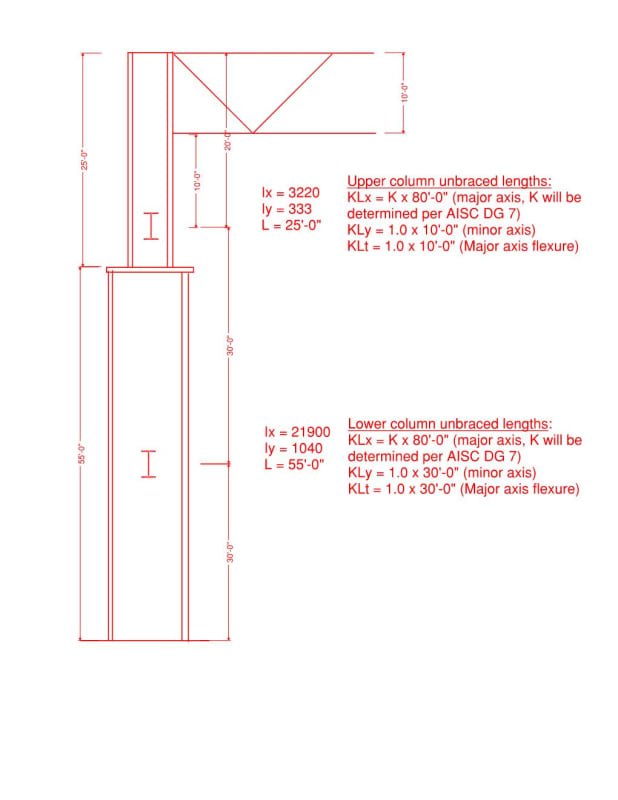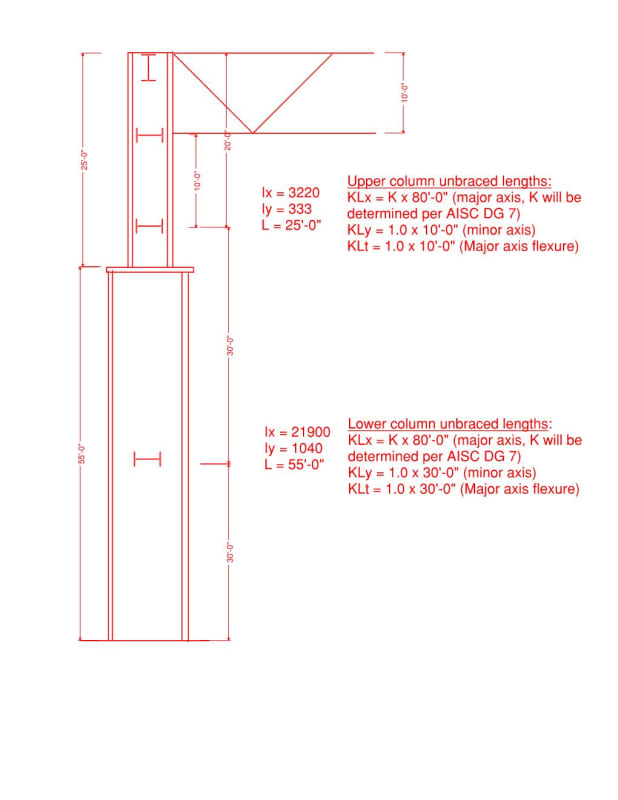Hi,
I am trying to understand the the effective length factors for stepped column per AISC DG 7. See the attached image.
The struts needs to be at the location shown. Based on the strut locations, is my unbraced length for the axial and flexure calculations correct. The "K" factor for the major axis will be determined per Appendix B of AISC DG 7.
The only thing that is throwing me off is not having a strut at the top and bottom column intersection. I cannot have a strut there because of clearance requirement and hence I have thrown a strut at 60'-0" elevation. So I am not sure if the unbraced length that is shown in the figure for the minor axis buckling is correct. Any inputs will be appreciated.

I am trying to understand the the effective length factors for stepped column per AISC DG 7. See the attached image.
The struts needs to be at the location shown. Based on the strut locations, is my unbraced length for the axial and flexure calculations correct. The "K" factor for the major axis will be determined per Appendix B of AISC DG 7.
The only thing that is throwing me off is not having a strut at the top and bottom column intersection. I cannot have a strut there because of clearance requirement and hence I have thrown a strut at 60'-0" elevation. So I am not sure if the unbraced length that is shown in the figure for the minor axis buckling is correct. Any inputs will be appreciated.


